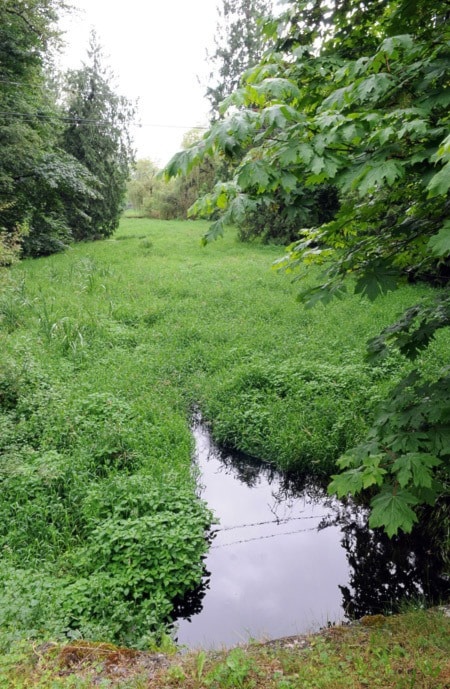The Hope Slough was historically navigable by canoe, but it’s been choked with canary reed grass for years.
A five-km section of the upper Hope Slough in Rosedale is on deck to be cleared this summer as part of the city’s 2011 open drainage maintenance program.
It’s the worst section for weeds, and fertilizer-laden agricultural runoff is one of the major culprits.
The lack of riparian cover and invasive species taking over the waterway are other factors.
“The plan is to open a channel that’s five or six metres wide to allow for better water conveyance,” said Neil Calver, city assistant operations manager, at the last council meeting.
The aim of the project, which was still pending DFO authorization at press time, is to substantially increase water flow and allow fish passage by removing the weed mats.
Calver said a similar project was carried out on Atchelitz Creek, which was subsequently considered “pristine” with fruitful habitat created after the work was completed.
The Hope Slough clearing work could start as early as next week. The proposed stretch of the upper slough starts near the corner of Yale Road East and Nevin Road, and travels east, following the snaking waterway northeast from there to Bustin Road.
But the process of getting project approvals just became “more complicated,” this year, said Calver, referring to the addition of another approving agency, the Canadian Environmental Assessment Agency.
City officials complied with this additional screening process “as part of its ongoing commitment to effective and environmentally responsible drainage maintenance,” according to the staff report.
Doing maintenance work in fish-bearing watercourses now triggers the new requirement for CEAA approval.
This year’s open drainage maintenance program proposal is for 20 kilometres of work in non-fish bearing streams, and another 38 kilometres in fish-bearing watercourses.
jfeinberg@theprogress.com
twitter.com/CHWKjourno
